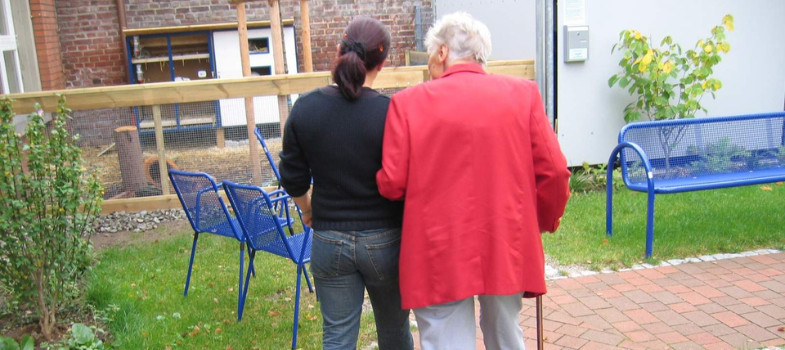3.2 What communication problems are caused by Parkinson’s?
Exercise 3.1
We communicate with each other in lots of different ways. Think about all the different ways you communicate with your family, friends and colleagues and write your thoughts down in your reflection log [Tip: hold Ctrl and click a link to open it in a new tab. (Hide tip)] .
When you think about all the different ways we communicate, can you guess what percentage of our face-to-face communication is done in the following ways?
- Talking
- Gesture and tone
- Body language
Answer
These figures come from the book Silent Messages: Implicit communication of emotions and attitudes by Albert Mehrabian. In this book, Mehrabian discusses how important certain aspects of face-to-face communication are in relation to one another. Most people are very surprised at the answers:
- talking: 7%
- tone: 38%
- body language: 55%.
People with Parkinson’s may find they have problems with different kinds of communication, including speech, facial expressions and writing. Many people will be surprised at how low the percentage of 7% is for talking. It is true that we need words to communicate, but words themselves can often have different meanings – it is the way in which we say these words that communicate what we really mean.
Speech
Many people with Parkinson’s have speech problems that may make everyday activities, such as talking to friends or using the phone, difficult. For example, their speech may be slurred, and their voice hoarse, unsteady or quieter than it used to be. People might find it hard to control how quickly they speak – this can make it difficult to start talking and may make their speech get faster. Some people with Parkinson’s also find that their voice can be monotone.
When we talk, our gesture and tone help us to convey meaning much more than words. We saw that Albert Mehrabian said 38% of our communication is tone. Think about how meaning can be misconstrued when you send an email or text. How often have you given the wrong impression through an email? Now consider the impact that this can have on someone with Parkinson’s who has speech difficulties.
These problems can make it hard when a person is talking to another or in a group situation. Taking turns to speak, following fast-changing topics or interrupting might be difficult, and so people with Parkinson’s may find themselves giving minimal responses or withdrawing from socialising altogether.
People with Parkinson’s can also experience slowness of thought (bradyphrenia). When you ask a person with Parkinson’s a question it can often take much longer for them to listen to what you said, think about their response and then articulate it than it does for people without Parkinson’s. This can become even more difficult when people are stressed or anxious.
Facial expressions and body language
Some people with Parkinson’s can have issues with facial expression because of difficulty controlling facial muscles. This is called hypomimia. Sometimes a person may make an expression that they didn’t plan to make. At other times they may find it difficult to smile or frown. This can make it hard for people with these symptoms to show how they feel about a situation or something being said.
Transcript
[Music playing]
You can download this resource and view it offline. It may be useful as part of a group activity.
Albert Mehrabian suggests that body language is 55% of our communication. All of us are experts in reading body language – we do it every day without even thinking about it. Most of us express how we feel by how we stand, the position of our head and if we look relaxed or not.
Body language can also be affected by Parkinson’s symptoms – this can include slowness of movement, stiffness and tremor. These symptoms can reduce body or hand gestures, and make head and neck movements more restricted. Starting movements can be hard and can become slower and clumsier.
Involuntary movements (also known as dyskinesia) can be a side effect of Parkinson’s medication. These can affect any part of the body, including the face and mouth. As a result, people with Parkinson’s may be unable to control their movements well enough to speak or to communicate.
Handwriting
Many people with Parkinson’s experience problems with handwriting. This can be caused by tremor, lack of coordination, stiffness and a difficulty controlling small movements.
People may find their handwriting becomes spidery or difficult to read, or becomes smaller as they write (this is known as micrographia).
3.1 Introduction
